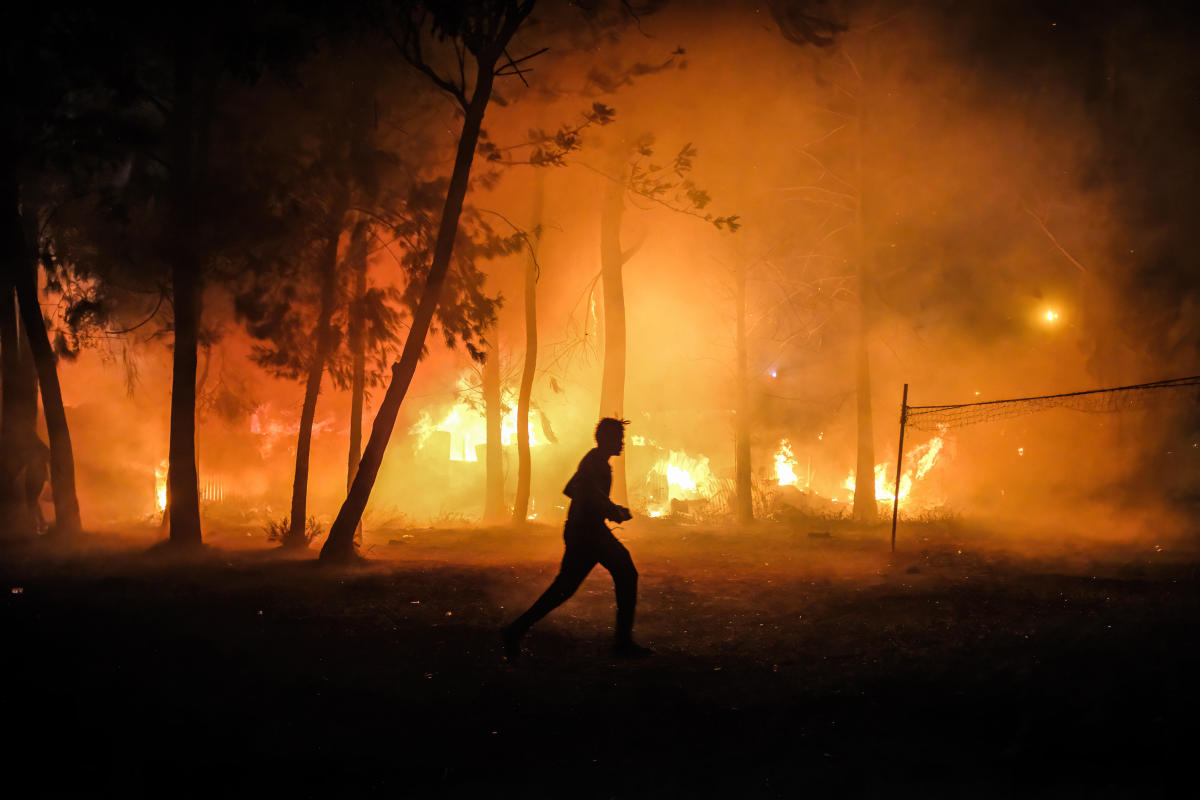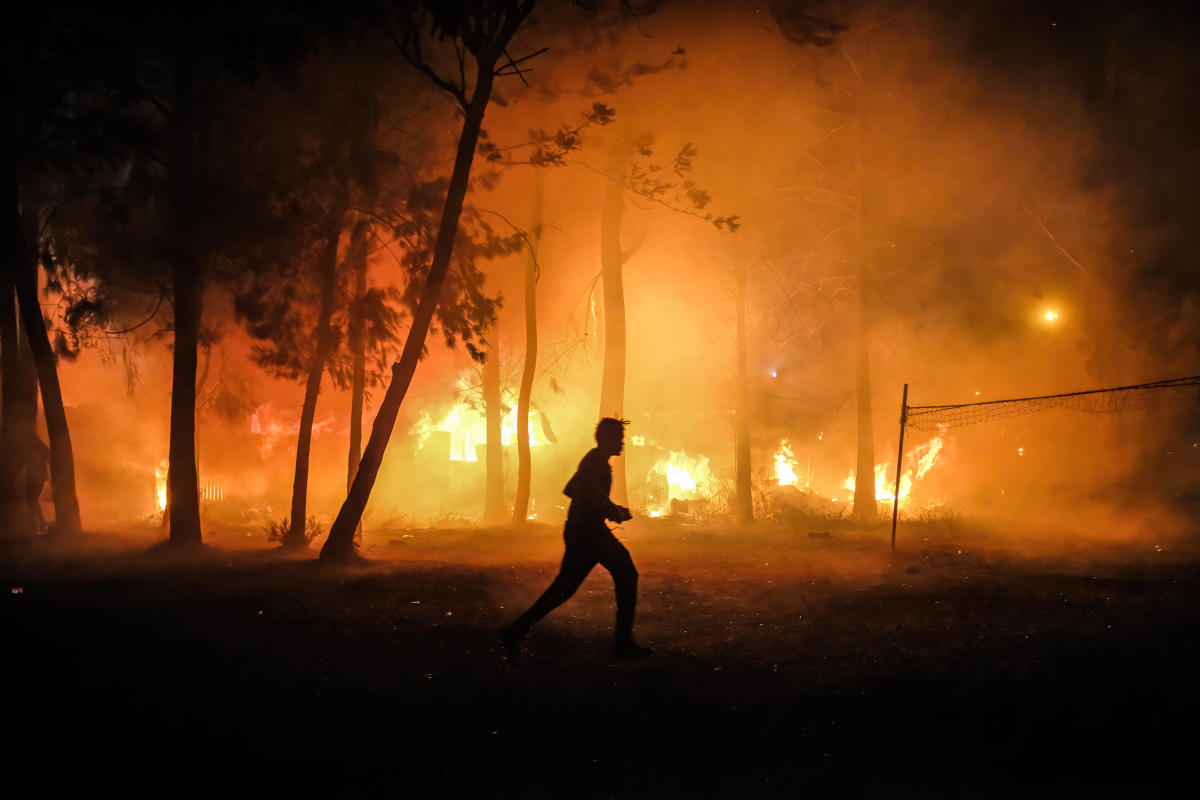
Three new reports from the United Nations paint a grim picture of what’s to come in the near future as the world falls short in mobilizing against climate change. According to the reports, nations are failing to create and act on sufficient plans to reduce warming as global greenhouse gas emissions are on the rise — a combination that is putting the planet on track to hit nearly 3 degrees Celsius of warming within less than 80 years.
The U.N. issued the reports on Wednesday and Thursday providing details on the state of the planet. For years, scientists both in and outside of the organization have warned with growing urgency that limiting global warming to 1.5 degrees Celsius compared to preindustrial times is critical to minimizing extreme temperatures and climate disasters.
But according to U.N. Environment Programme’s Emissions Gap Report, there is now “no credible pathway” remaining to make that happen.
“Loss and damage from the climate emergency is getting worse by the day and global and national climate commitments are falling pitifully short,” United Nations Secretary-General António Guterres said. “…Under current policies, the world is headed for 2.8 degrees of global heating by the end of the century. In other words, we are headed for a global catastrophe.”
As the latest @UNEP Emissions Gap report makes clear, we are headed for economy-destroying levels of global heating.We need #ClimateAction on all fronts – and we need it now.We must close the emissions gap before catastrophe closes in on us all.
— António Guterres (@antonioguterres) October 27, 2022
The only way to change this trajectory is with “urgent system-wide transformation,” the agency said — but as the U.N.’s other reports show, such transformative changes are not on track.
On Wednesday, the U.N. Framework Convention on Climate Change issued its own report showing that countries around the world are currently on a path to increase greenhouse gas emissions by 10.6% by 2030, compared to 2010 levels. While that is an improvement from last year’s assessment — which projected an increase of 13.7% — it is still far more than the environment can handle.
The more greenhouse gases there are in the atmosphere —particularly carbon dioxide and methane — the more the sun’s radiation is trapped in the planet and the Earth warms. The report warns that nations’ efforts to reduce emissions are still “insufficient” to minimize global warming.
Even if all 193 parties who signed on to the Paris Climate Agreement fulfill their current commitments, the world is still looking at roughly 2.5 degree Celsius of temperature rise by 2100.
“This year’s analysis shows that while emissions are no longer increasing after 2030, they are still not demonstrating the rapid downward trend science says is necessary this decade,” the report said, adding that the agency found earlier this year that greenhouse gas emissions would need to be cut by 43% by 2030 to limit warming to 1.5 degrees Celsius.
“Another ominous climate change warning”
The third report, published by the U.N.’s World Meteorological Organization on Wednesday, shows just how critical it is to limit those greenhouse gases. In “yet another ominous climate change warning,” the agency found that the planet’s three main greenhouse gases — carbon dioxide, methane and nitrous oxide — reached new highs in 2021, hitting values that amount to 149%, 262% and 124%, respectively, of pre-industrial levels.
From 2020 to 2021, carbon dioxide levels saw an increase larger than the annual growth rate over the last decade, the report found. It accounted for the majority of the 50% increase in greenhouse gases that have a warming effect from 1990 to 2021.
Perhaps even more dire, however, was the finding of “the biggest year-on-year jump in methane concentrations” since the agency began taking measurements nearly 40 years ago. This is particularly troubling as methane is the second-most abundant greenhouse gas, accounting for about 20% of global emissions, according to the EPA, and is more than 25 times as potent as carbon dioxide at trapping heat.
“We are still nowhere near the scale and pace of emission reductions required to put us on track toward a 1.5 degrees Celsius world,” said Simon Stiell, executive secretary of the U.N. Framework on Climate Change. He said the agency has only received 24 new or updated climate plans since the global COP 26 climate conference last year — despite all countries agreeing to strengthen their plans.
That failure, he said, is “disappointing.”
“To keep this goal alive, national governments need to strengthen their climate action plans now and implement them in the next eight years,” he said. “… Government decisions and actions must reflect the level of urgency, the gravity of the threats we are facing, and the shortness of the time we have remaining to avoid the devastating consequences of runaway climate change.”
The U.N. reports show that the world should prepare to see negative and severe consequences as the planet warms, according to Petteri Taalas, weather chief of the World Meteorological Organization.
“We could face … this negative trend in weather patterns that means flooding, droughts, heat waves, tropical storms. … But the game that we have already lost this is the melting of glaciers,” Taalas told CBS News at a briefing on the report Wednesday. “We have so high concentration of carbon dioxide, that the melting of glaciers will continue for the coming hundreds of years even coming thousands of years.”
“We are now at ‘code red'”
Leaders stressed that we still can — and must — take action.
One of the most important issues to tackle, Taalas said, is reducing the burning of fossil fuels, which are a primary source for greenhouse gases.
“Methane has a relatively short lifetime of less than 10 years and so its impact on climate is reversible. As the top and most urgent priority, we have to slash carbon dioxide emissions which are the main driver of climate change and associated extreme weather, and which will affect climate for thousands of years through polar ice loss, ocean warming and sea level rise,” Taalas said in a press release. “We need to transform our industrial, energy and transport systems and whole way of life.”
As the U.N. released its slew of reports, climate researchers from Oregon State University published their own special report in the American Institute of Biological Sciences journal BioScience, saying that “we are now at ‘code red’ on planet Earth.”
“Humanity is unequivocally facing a climate emergency,” they wrote. “The scale of untold human suffering, already immense, is rapidly growing with the escalating number of climate-related disasters.”
While 2022 marks the 30th anniversary of when more than 1,700 scientists issued a landmark climate warning in 1992, the world continues to inch closer to temperatures that Earth “has not experienced over the past 3 million years.”
At 2.5 degrees Celsius of warming, scientists have warned that we can expect to see more frequent — and more devastating — climate disasters. Already this year, an ongoing drought meant vital reservoirs and rivers across the U.S. and Europe reached unprecedented low water levels, while extreme heat brought record-breaking triple-digit temperatures. Heat waves plagued India and Pakistan while extreme flooding killed more than 400 people in South Africa and more than 1,000 in Pakistan.
“We are now in a major climate crisis and global catastrophe with far worse in store if we continue with business as usual. As such, there is more at stake today than at any time since the advent of the stable climate system that has supported us for more than 10,000 years,” the researchers said.
“…The very future of humanity depends on the creativity, moral fiber, and perseverance of the 8 billion of us on the planet now.”
CBS News correspondent Pamela Falk contributed to this report.
Candidates in key races face off in debates as Election Day approaches




